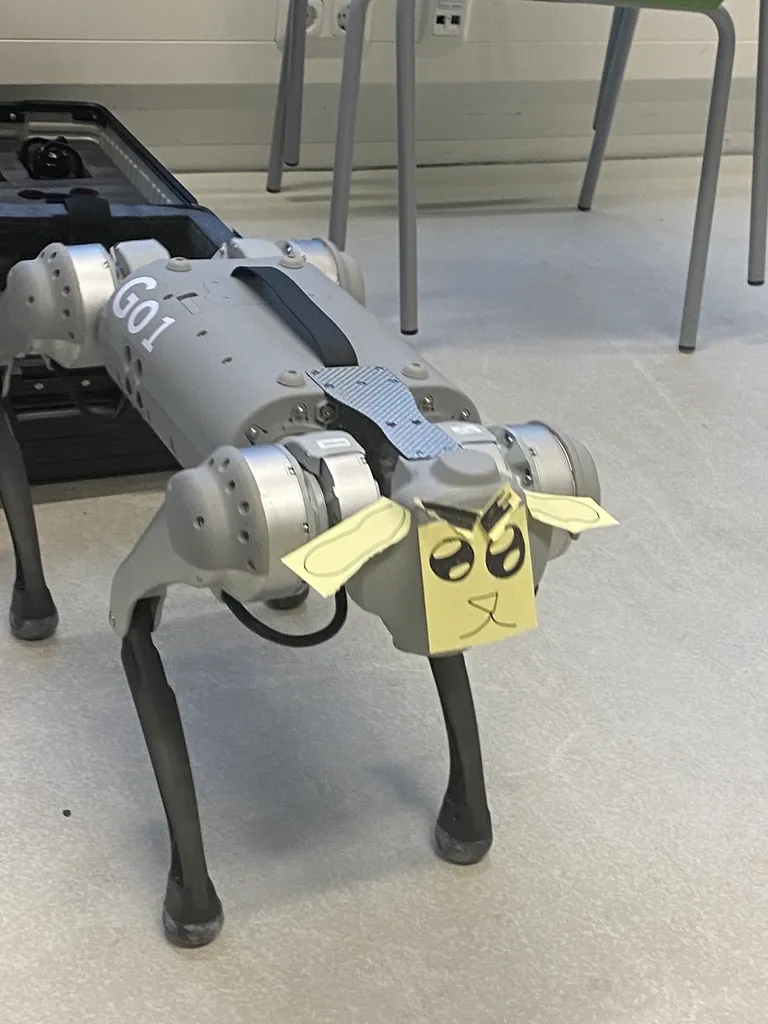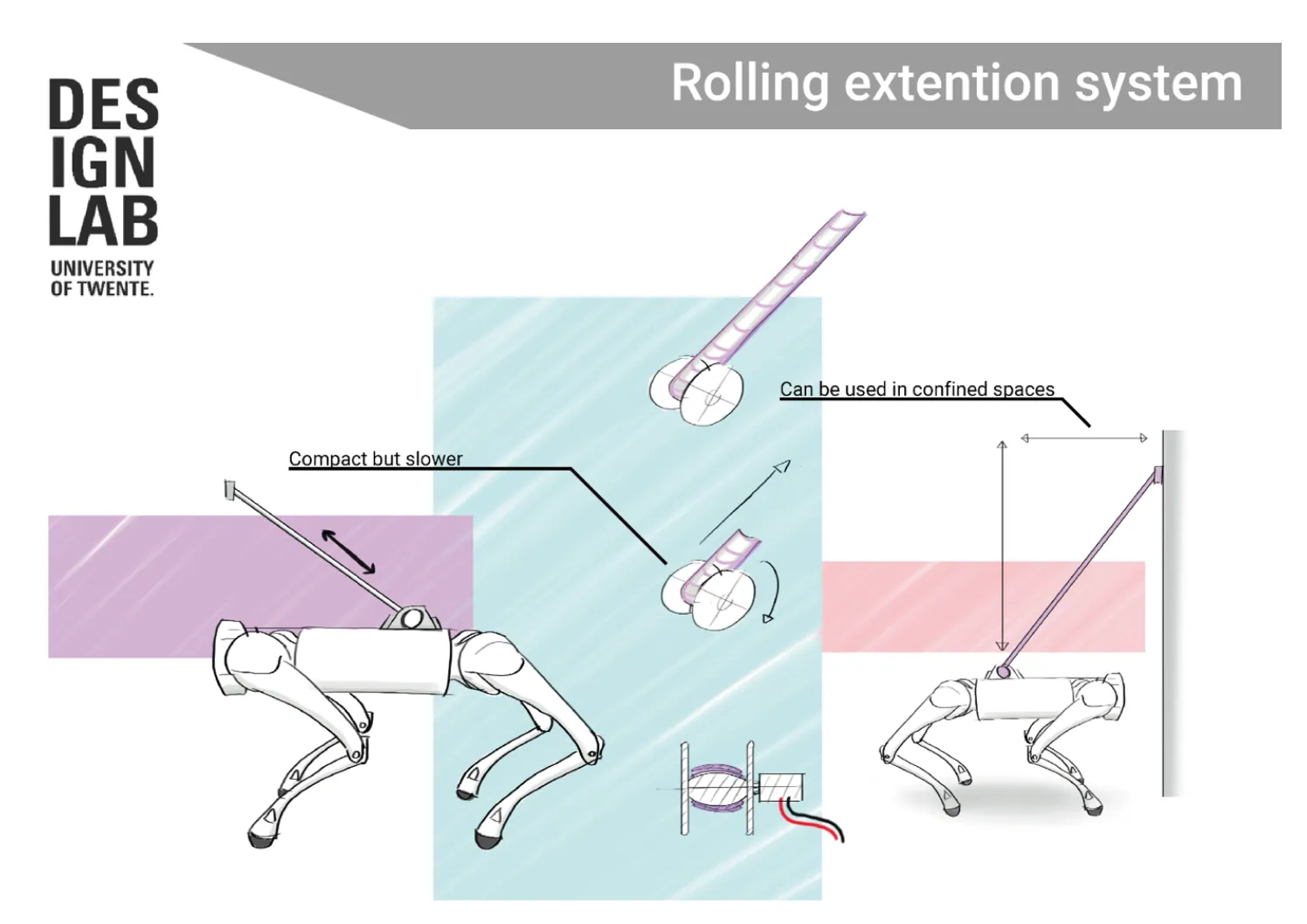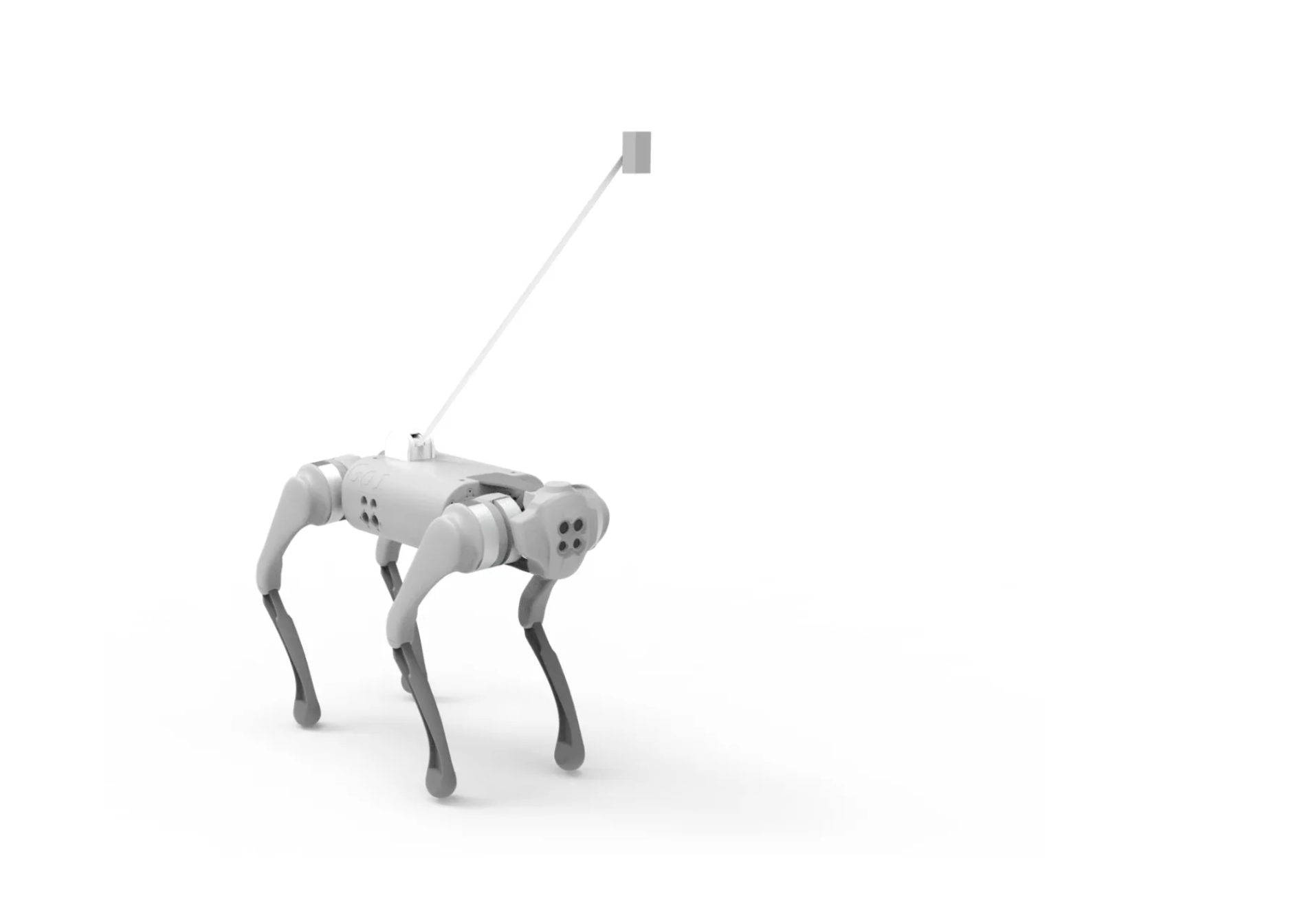Project Overview
In collaboration with the Dutch National Police and the University of Twente DesignLab, this project aimed to create a robotic dog capable of deploying environmental sensors in indoor spaces to provide early warnings of hazards, with a focus on officer safety and a shortage in the police force.
Our team of six worked on designing a sensor-deployment attachment for the robot. This challenge involved not only technical development but also addressing ethical concerns to ensure safe and appropriate use of the technology. We ultimately created a retractable sensor-deployment mechanism inspired by measuring tapes. The design ensured precise placement at the desired height while mitigating potential misuse of the tool.
My Contributions
- Iterative Design: Contributed to brainstorming and refining the retractable deployment mechanism concept.
- Stakeholder Interviews: Conducted discussions with robotics experts, technology philosophers, and police officers to guide the development process and address ethical concerns.
- Prototyping: Participated in fabricating and assembling the device casing, working closely with teammates to finalize the structure.
Impact
- Created a functional prototype balancing technical feasibility and ethical considerations.
- Delivered a live demo of the functional prototype to stakeholders, showcasing the robotic dog’s ability to deploy sensors in indoor environments.
- Provided a comprehensive and exhaustive report detailing the full development process, design requirements, and expert advice gathered throughout the project.
- Gained valuable experience in ethical design practices, stakeholder communication, and iterative problem-solving.



